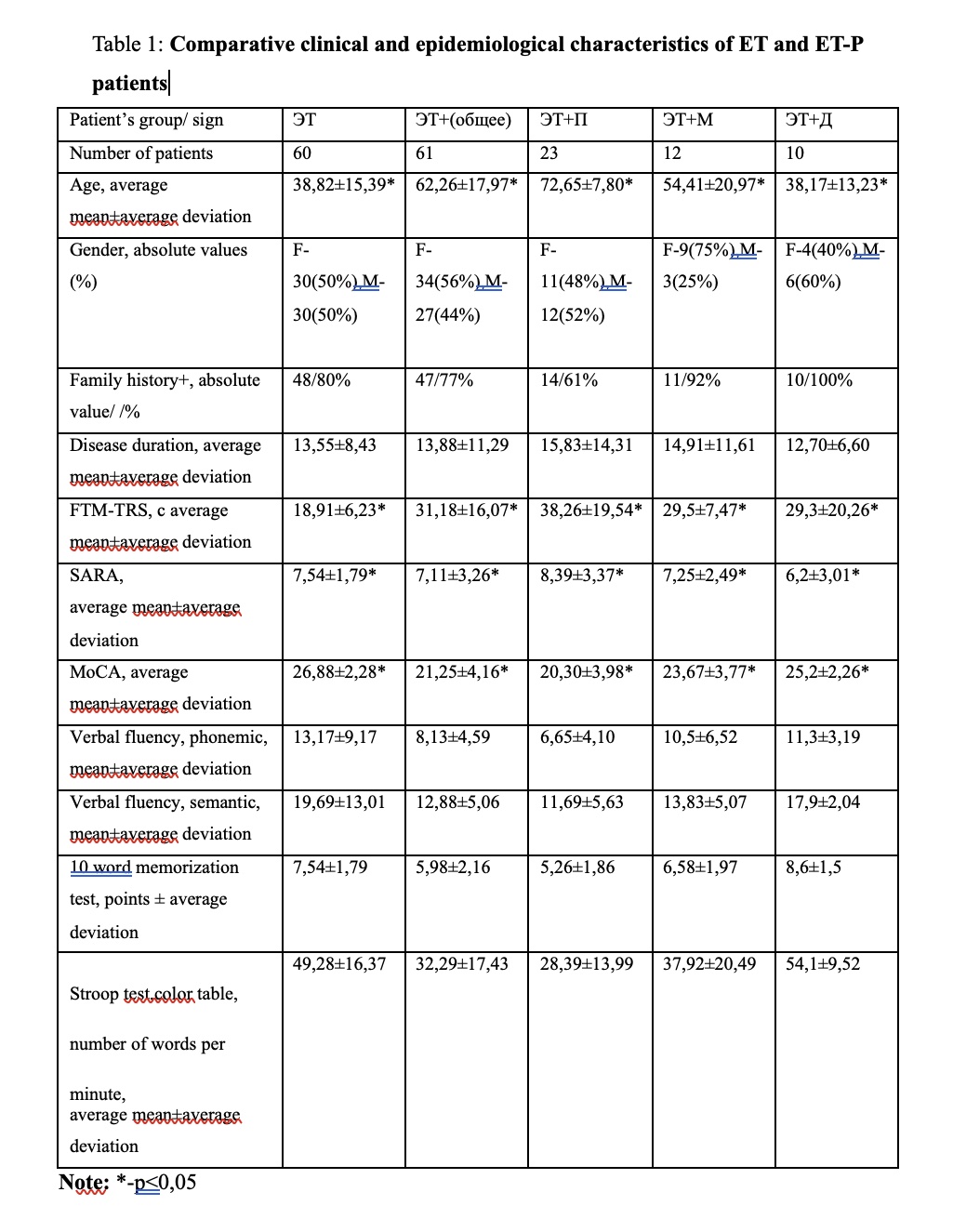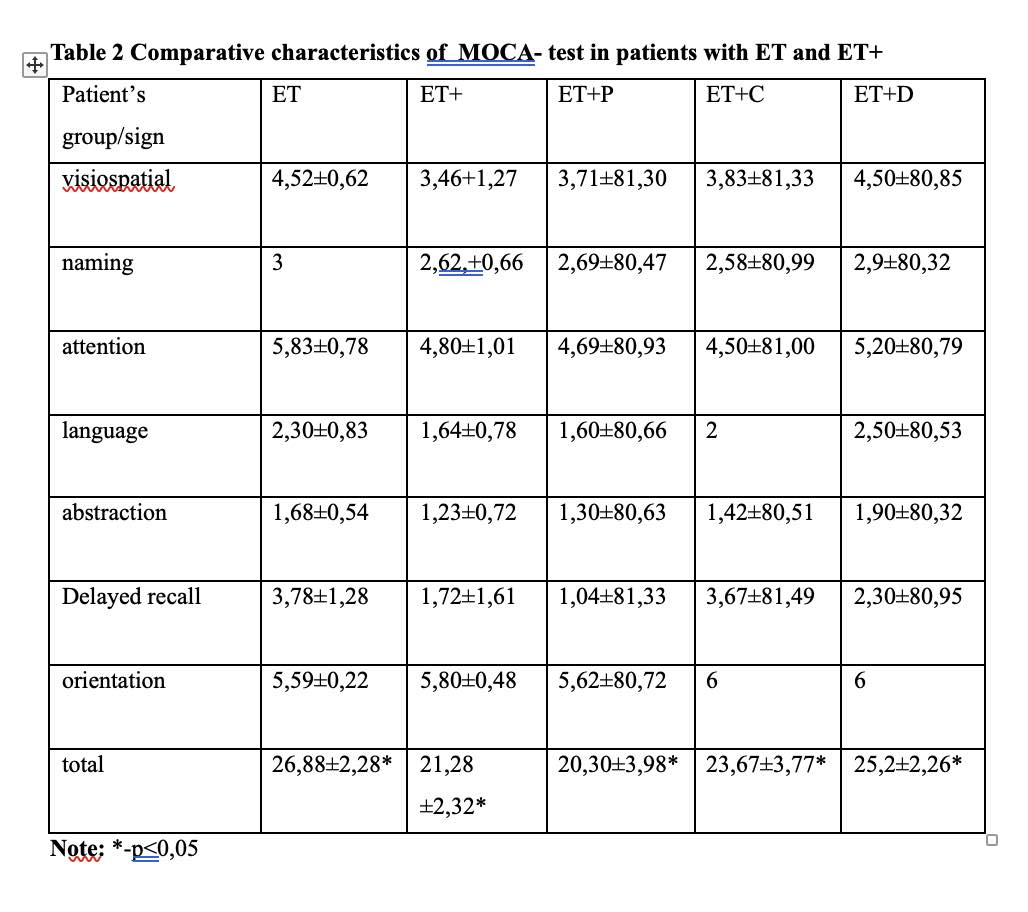Category: Tremor
Objective: to conduct a comparative analysis of changes in neurological status and cognitive decline of various types of essential tremor (ET).
Background: in the new classification of ET there is no clear diagnostic criteria for dividing ET and ETP, no understanding of the pathogenesis and prognosis of the disease. Meanwhile, cognitive decline and severe ataxia can cause the same inconvenience as trembling and might be a reason for severe disability.
Method: a prospective study of 121 patients was conducted in Kazan, Russia, the average age was 66.29±10.16, with a pronounced predominance of women. Patients were divided into 2 groups: patients with ET (ET, pure) and ET plus (ET+). Among the patients in the ET+ group were identified patients with parkinsonian signs (ET+P), with cerebellar impairment (ET+C), and pathological head position (ET+D). For intelligence assessment were used a MoCA test, a 10-word memorization test, a verbal fluency test, and a Stroop test (color table). Comparative characteristics of both groups are presented in Table 1, changes in the MOCA test in Table 2.
Results: patients were equally distributed into ET and ET+ groups; no differences in heredity and disease duration were identified. Patients in the ET and ET+D groups were significantly younger. The severity of tremor according to FTM is higher in ET+, more represented in the subgroups ET+P, ET+C. According to MOCA test, patients with ET and ET+D had a higher result. Memory in the 10 words-test and in the MOCA test, was declined in all patients with ET, lowest in ET+P. The results of speech fluency test, phonemic variant, were reduced in the ET+; lowest score in the ET+P. There were no changes in the semantic subcategory of speech fluency in all patients. The Stroop test shows a decrease in tempo in patients of all groups.
Conclusion: There were no differences in duration of the disease or heredity among patients with ET. Patients with ET+ have a later onset of the disease, with the exception of patients with ET+D. All patients has attention, memory, executive function disturbances, higher in ET+P. The tests results of cognitive tests are higher in patients of the ET+D subgroup.
Сlinical characteristics of ET and ET+
Сharacteristics of MOCA- test in ET and ET+
To cite this abstract in AMA style:
M. Ermakova, Z. Zalyalova, S. Munasipova. Comparative assessment of cognitive functions of patients with ET and ET plus. [abstract]. Mov Disord. 2024; 39 (suppl 1). https://www.mdsabstracts.org/abstract/comparative-assessment-of-cognitive-functions-of-patients-with-et-and-et-plus/. Accessed January 5, 2026.« Back to 2024 International Congress
MDS Abstracts - https://www.mdsabstracts.org/abstract/comparative-assessment-of-cognitive-functions-of-patients-with-et-and-et-plus/


